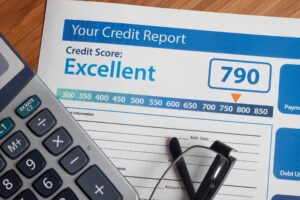**Title: Understanding Lease Purchase Agreements: A Comprehensive Guide for First-Time Home Buyers**
**Introduction**
Lease purchase agreements, also known as rent-to-own contracts, are an appealing option for prospective first-time home buyers who need more time to build up their credit scores or save for a down payment. These agreements are among the most legally binding of the various lease-to-own options. This guide will provide an in-depth breakdown of lease purchase agreements and their benefits, helping you determine if this is the right option for you.
**What Is A Lease Purchase Agreement?**
A lease purchase agreement in real estate is a rent-to-own contract between a tenant and a landlord, allowing the tenant to purchase the property at a later date. The renter pays the seller an upfront option fee based on the purchase price, giving them exclusive rights to buy the property. Both parties agree on the purchase price of the home at the end of the lease term. Typically, a portion of the monthly rent goes toward a down payment. The renter must be confident they can secure a mortgage at the end of the lease, or they forfeit the purchase option.
**Lease Option vs. Lease Purchase Agreement**
Lease purchase agreements are often confused with lease option agreements. Both involve a nonrefundable option fee and prohibit the landlord from selling the property to anyone else during the lease term. However, the key difference is that a lease option only obligates the seller to sell, while a lease purchase agreement commits both parties to the sale, barring breach of contract or the buyers inability to secure a mortgage. Buyers are typically required to pay for maintenance costs, property taxes, and insurance, and can expect to pay higher than fair market rent to contribute to a down payment.
**How To Structure A Lease Purchase Agreement**
1. **Set The Lease Period**
– The lease should outline the lease period and the monthly rent amount. Lease purchase agreements often have a longer lease period, typically up to 3 years.
2. **Include Special Clauses**
– The lease agreement will include standard elements of a traditional lease along with special clauses, such as requiring the tenant/buyer to pay for maintenance costs, property taxes, and insurance fees. Common special clauses include the option fee amount, purchase price, and down payment.
3. **Allocate Portion Of Rent To The Down Payment**
– This portion of the agreement typically allocates a dollar amount of rent that will go toward a down payment. For example, if a renter is paying $2,000 a month on a $250,000 home, and $400 per month goes toward a down payment, at the end of a 24-month lease, the buyer has the option to use $9,600 as a down payment.
4. **Include A Contract Of Sale**
– This section outlines the purchasing process and terms once the lease period ends. Both parties agree on a purchasing price at the time of the rental agreement, often higher than the market value to account for appreciation. The buyer is responsible for securing a mortgage loan on the property.
5. **Have A Professional Review Your Contract**
– Its highly recommended to have a real estate attorney review this type of agreement before signing. Some agreements may require full repayment even if the buyer cant secure financing, so legal advice is crucial.
**Benefits Of A Lease Purchase Agreement**
**How The Buyer Benefits**
– **Down Payment:** The tenant will finish the lease term with a considerable down payment saved by simply paying rent.
– **Convenience:** The tenant can offset moving expenses and hassle by buying the home theyre already in.
– **Credit Score:** A lease purchase agreement can give the buyer time to repair their credit score while working toward homeownership.
– **Home Equity:** If the propertys value increases above the agreed-upon purchasing price, the buyer has already built equity in the home.
**How The Owner Benefits**
– **Large Upfront Payment:** The property owner keeps the option fee even if the buyer defaults.
– **Attract Tenants:** Owners can attract responsible renters who are more likely to maintain the property.
– **Default Benefit:** If the tenant defaults, the owner keeps the down payment at the end of the lease term.
– **Locked-In Sales Price:** The owner can choose the purchase price in advance, which can be beneficial depending on market fluctuations.
– **Simplified Selling Process:** The landlord can transfer ownership on the closing date without going through the normal sales process.
**The Bottom Line: A Rent-To-Own Agreement May Be The Right Option For You**
Treat lease purchase agreements as seriously as you would a home purchase. They can benefit property owners with hard-to-sell homes and renters who need more time to qualify for a loan. Be sure to review any agreements with a lawyer ahead of time.
Wherever you are on your journey to buy a home, information is always power. Learn more about your next steps by filling out an online application today! You can also give us a call at 888-372-8820 or visit [O1ne Mortgage Inc.](https://o1nemortgage.com) to request a mortgage quote or apply for a loan.
**Keywords:** lease purchase agreement, rent-to-own, first-time home buyers, mortgage, down payment, credit score, home equity, real estate attorney, O1ne Mortgage Inc.
Home Buying
1. Buying a foreclosed home 2. Foreclosure process 3. Real estate agent 4. Mortgage preapproval 5. Home inspection







